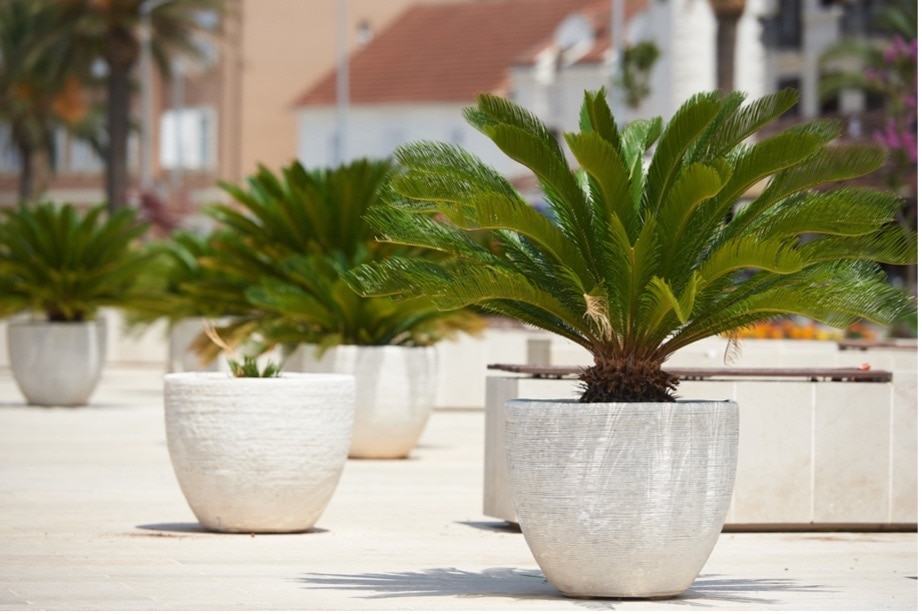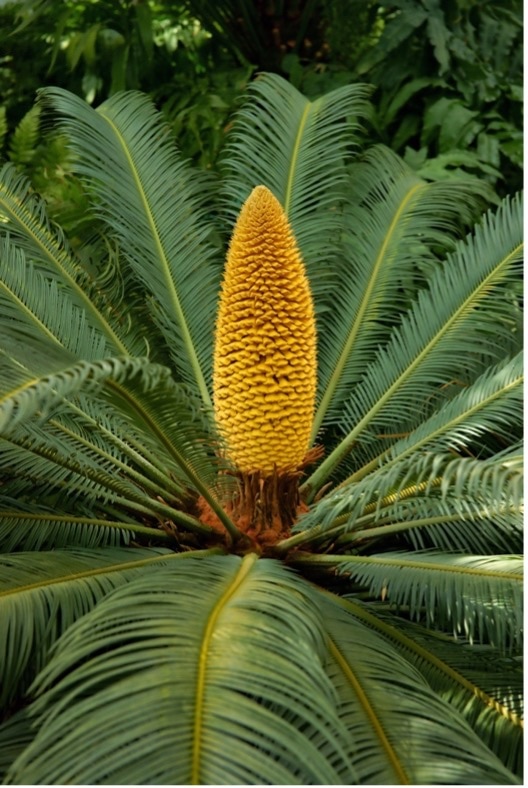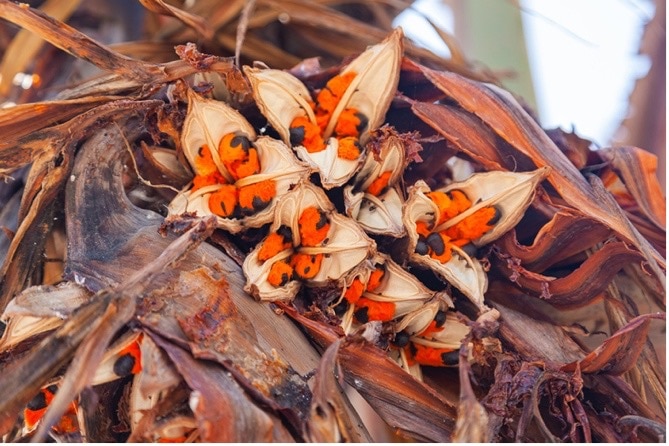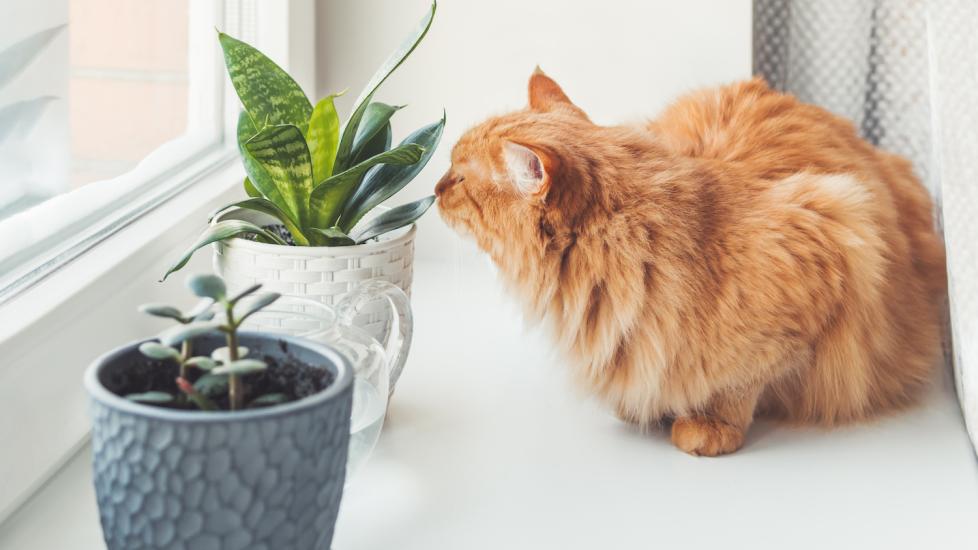Sago Palm Poisoning in Cats
What Is Sago Palm Poisoning in Cats?
Sago palm (Cycas revoluta) is an extremely toxic plant to cats. Toxicity occurs more often in dogs, but can be seen in cats. Although this plant is common in tropical and subtropical environments in the Southern United States, there have been increased reports of this toxicity in all parts of the country.
Sago palm is a slow-growing tree that can reach up to 10 feet in height, but it may take 50 years. These plants have increased in popularity because they can be cultivated inside the home and then replanted outside.

Sago palm plants | Image Credit: iStock.com/Pridannikov
A cat can die within a few hours of ingesting any part of this plant, even a seedling. If you suspect your cat has chewed on or ingested any part of the sago palm plant, contact an emergency veterinary hospital immediately.
How Are Sago Palms Poisonous to Cats?
Although chewing or ingesting any part of the sago palm can cause toxicity, the most poisonous part of the plant is the orange-reddish seeds (nuts) at its center. These seeds often fall out of the tree when new fronds are blooming.


The center and seeds of the sago palm plant (the most toxic part of the plant) | Image credit: IStock.com/Mirek Kijewski
Due to its bright colors and possible sweet smell, the plant can easily attract any cat that is curious. Cats can develop a toxicity even if small bits are ingested, which can cause serious health concerns.
The liver removes toxins from the bloodstream. When sago is ingested, toxicity starts with liver damage, and this can lead to liver failure and even death. The sago palm contains the cyasin toxin, which after affecting the gastrointestinal tract and attacking the liver will lead to neurological disorders and abnormal bleeding/clotting. Liver disease left untreated is fatal; the sooner your cat receives veterinary attention, the better the prognosis.
Symptoms of Sago Palm Poisoning in Cats
According to the Pet Poison Helpline, clinical signs of sago palm toxicity will begin 15 minutes to several hours after ingestion. The initial signs are gastrointestinal, including drooling, vomiting, diarrhea, changes to appetite, or anorexia.
As the toxicity progresses, central nervous system symptoms will begin within 4 hours after ingestion. These signs can include weakness, walking strangely (ataxia), tremors, and even seizures. Within 2 to 3 days of ingestion, your cat will be in severe liver failure.
In addition to gastrointestinal signs, clinical signs of liver failure include lethargy, abdominal pain, dark urine, jaundice (yellowing of whites of eyes, gums, and skin), black tarry stool from digested blood, fresh red bloody stool, increased thirst, bruising, and an accumulation of fluid in the belly (a bloated stomach).
Your Cat Ate a Sago Palm. Now What?
Since sago palm toxicity can progress quickly, take your cat directly to your regular veterinarian or a veterinary emergency room. It is often helpful to call the Pet Poison Helpline on the way to the hospital or while at the veterinary hospital. It is not recommended that you make a cat vomit at home, as the risks often outweigh the benefits.
How Veterinarians Diagnose Sago Palm Poisoning in Cats
Sago palm toxicity is most often diagnosed after a pet parent sees their cat ingest or chew any part of the plant. Blood and urine testing can identify damage to the liver, which indicates to your veterinarian that treatment needs to be started immediately. An abdominal ultrasound may also be needed, which allows your vet to visualize the liver for signs of toxicity.
Treatment of Sago Palm Poisoning in Cats
Even with aggressive treatment, the survival rate for a cat that has ingested a sago palm plant is only about 50%. Death will commonly occur without immediate treatment. Time is of the essence, and chances of survival increase with early medical intervention including aggressive decontamination. Decontamination often involves your vet inducing vomiting with a special medication as long as the Sago palm ingestion occurred recently. Administration of oral activated charcoal helps decrease the amount of toxin absorbed by the body, and this treatment should only be done by a veterinarian and not at home.
Hospitalization will often be necessary for supportive care, including fluid therapy to flush the toxins and maintain hydration, as well as antacids and antibiotics. Special medications are also given to help protect the liver, such as N-acetylcysteine and Vitamin C. If liver damage is present, more intensive therapy is needed and the risk for long-term effects and even death is possible. Cats with bleeding disorders from liver disease are often treated with oxygen therapy, blood and/or plasma transfusions, and Vitamin K1.
Recovery and Management of Sago Palm Poisoning in Cats
Cats with sago palm toxicity need to be hospitalized for the duration of their intensive care, often for days to weeks, depending upon the severity of the liver disease and the clinical signs displayed. Fifty percent of cats who ingest part of a sago palm will not survive. The sooner you get your cat to the vet, the better the chance for recovery.
Follow-up care will often be needed if your cat is discharged from the hospital, to ensure that the liver is functioning well enough. Medications, such as liver protectants, will be administered at home for life. All Sago palm plants should be immediately removed from the home or yard.
Prevention of Sago Palm Poisoning in Cats
If you decide to have this plant in your home, examine it often for any chew marks or leaves bitten off by your cat. According to the ASPCA, cardboard palm plants are a close relative of the Sago palm and are now popping up in gardening stores. These plants carry the same toxicity risks, so pet parents are urged to be cautious.
Other plants in the sago palm family that will cause the same toxicity signs, such as the coontie palm, cycads, and zamias, should not be kept in the home with pets. If you have these plants outdoors, removing them from your property is also recommended to prevent a medical emergency for your cat.
Featured Image: Adobe Stock/Konstantin Aksenov
